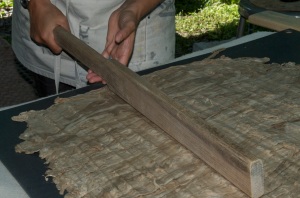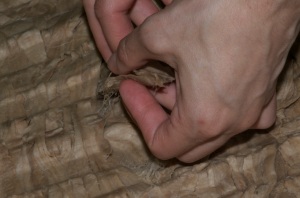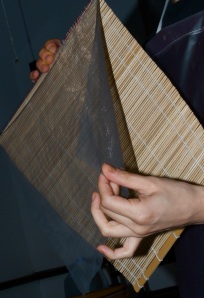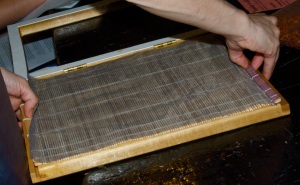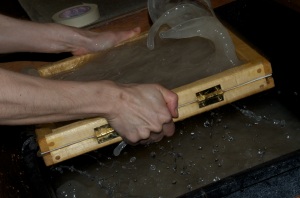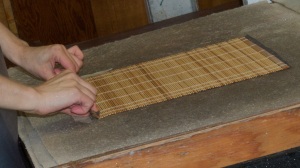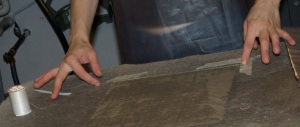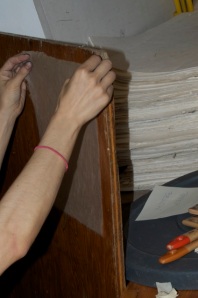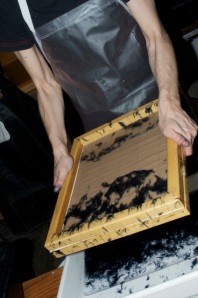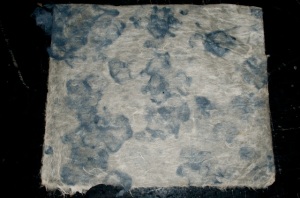This blog was writing in 2010 when I received a Fund For Teachers Grant and used it to make paper.
Welcome to Paper Stars, a journal designed to document and celebrate my experiences with making paper. I am the science specialist at the Lee Academy Pilot School, a K0-Grade 5 Boston Public School in Dorchester, MA. Certified to teach art as well as science at a K-8 level, I am interested in designing experiences in the classroom that cultivate skills used in making art, understanding and designing technology, and studying science. Those skills include but are not limited to observation, dexterity and the ability to use tools, collaboration and teamwork, and the ability to communicate one’s ideas to others.
Thanks to a generous fellowship from Fund For Teachers, I will be attending three paper making workshops at the Women’s Studio Workshop in Rosendale NY starting July 19. It is my hope to take my experiences as a student of paper making and design curriculum for my students.
Inspired by curriculum I teach at a kindergarten level about paper and wood from the eponymous FOSS Kit, I have developed a strong curiosity for how paper is made and wonder what kinds of paper we can make in our science classroom. So many things we use in everyday life are made of paper and paper is made from so many different materials.
This year in the science room kindergarten students made paper stars by reusing the paper from the tops of egg cartons. We called our room “the factory” when we were in production. Students worked together to rip the paper, mix it with water and blend it into a slurry, shape the paper using screens with star stencils, press the excess water out, lay them out to dry and then paint the stars. The paper stars were then presented to our graduating fifth grade class.
I was particularly impressed by the developmental appropriateness paper making offers students in elementary school. Seeing 5 year olds rip paper and then blend it, shape it, carefully place it to dry and then paint it promotes an ethic of excellence and dexterity. Addressing differentiation, there are many different jobs that members of the group can take part in – some more exacting and complex than others.
My hope is that the tradition of making paper stars for the graduating class will evolve and gain more student ownership in the future. Perhaps other grades will make the stars and there may be a theme or particular material they use.
I see great potential but first I must be the student. I am excited to embark upon this learning adventure and nurture my own artistic talents while employing the scientific method and process of technology to make paper of my own.
So stay tuned and see how this project develops!








